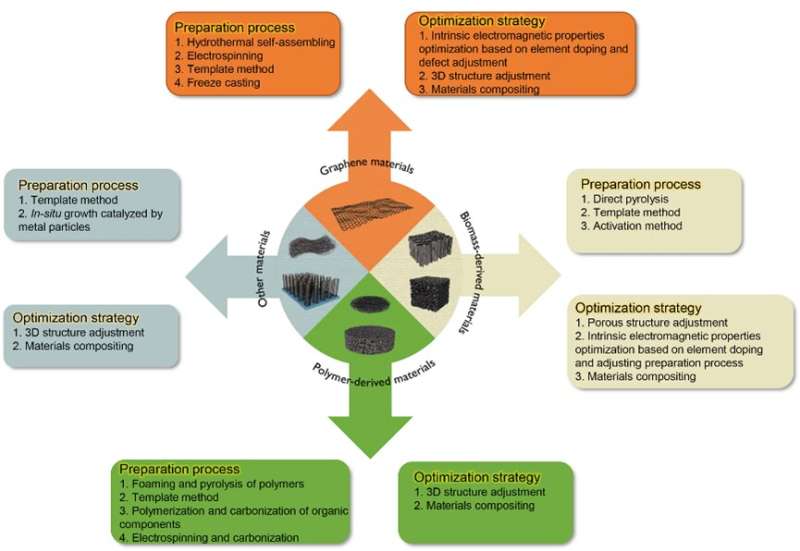Recent advance in three-dimensional porous carbon materials for electromagnetic wave absorption

Recently, Professor Jiurong Liu and Professor Zhihui Zeng of Shandong University published a review paper about three-dimensional porous carbon-based electromagnetic wave absorbing materials in Science China Materials.
With increasingly serious electromagnetic wave (EMW) pollution, the development of high-performance EWAMs has become a research hotspot. Carbon-based EWAMs have excellent physical and chemical stability as well as potent dielectric losses due to their high electrical conductivity.
In particular, 3D porous carbon-based EWAMs have been prosperous in the field of EMW absorption. The 3D porous structures greatly reduce the density of the material, promote the multiple reflection and scattering of the EMW, and optimize the impedance matching, so they are expected to achieve the goal of low density, thinness, wide absorption bandwidth, and strong absorption.
In this review, the authors first clarified the relevant theoretical basis and evaluation methods, including different EMW absorption mechanisms, indicators to evaluate the performance of EWAMs, and common modification methods of carbon-based EWAMs. After that, the latest research progress of 3D porous carbon-based EWAMs were summarized with the material origin as the main clue, in the meanwhile, some unique and novel viewpoints were highlighted.
These materials were mainly divided into graphene materials, biomass-derived materials, polymer-derived materials, and other materials. Among them, the graphene materials have strong conductivity and low density, and can achieve strong EMW absorption. But the fragile structure, impedance mismatch and high price limit their application.
Biomass is an inexpensive and readily available material, but the performance consistency of its derivatives is difficult to guarantee. Porous carbons derived from polymers and some other commercial materials are more suitable for large-scale production, but also suffer from problems such as impedance mismatch. Therefore, these materials have their own advantages and disadvantages. Therefore, the characteristics and performance of various materials were compared in this paper.
Finally, the authors also pointed out the existing problems and research prospects of 3D porous carbon-based EWAMs. They believe that the current related research has shown excellent results. The versatility and practicality of the materials have been further developed. Some emerging materials, such as biopolymers, have also been applied.
Computer technology has facilitated researchers' in-depth understanding of EMW absorption mechanisms and practicality of EWAMs. However, at present, these materials are still not mass-produced. Meanwhile, improved overall performance of carbon-based EWAMs still depends on material compositing. More importantly, the research on related theories still needs to be further developed. The authors hope that this review can inspire follow-up research and promote the further development of high-performance EWAMs.
More information: Mingrui Han et al, Recent advance in three-dimensional porous carbon materials for electromagnetic wave absorption, Science China Materials (2022). DOI: 10.1007/s40843-022-2153-7
Provided by Science China Press





















